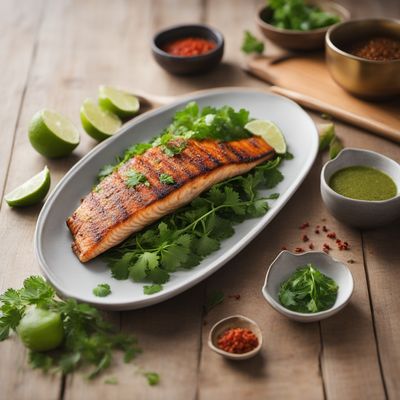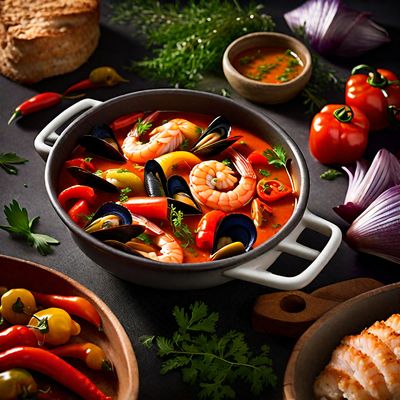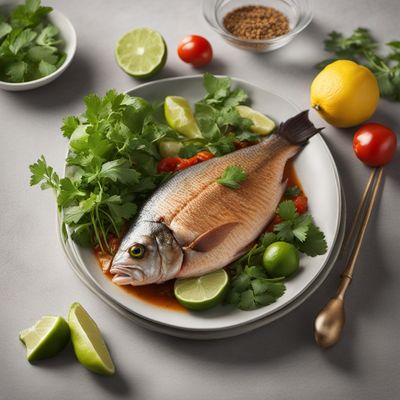
Ingredient
Fish (meat)
"The Ocean's Bounty: Exploring the Delights of Fresh Fish"
Fish, with its delicate and tender flesh, is a highly sought-after ingredient in the culinary world. Its characteristics vary depending on the species, but generally, fish has a mild to rich flavor, a firm to flaky texture, and a vibrant appearance. From the succulent white meat of cod to the buttery richness of salmon, fish offers a diverse range of options for culinary exploration.
Origins and history
Fish has a rich history dating back thousands of years, with its origins rooted in the waters of rivers, lakes, and oceans around the world. It has played a significant role in the diets and cultures of coastal communities, providing sustenance and livelihood. Fishing techniques have evolved over time, from traditional methods like netting and spearfishing to modern commercial fishing practices.
Nutritional information
Fish is a nutritional powerhouse, packed with high-quality protein, essential omega-3 fatty acids, vitamins (such as vitamin D and B12), and minerals (such as iodine and selenium). It is also generally low in calories and saturated fats, making it a healthy choice for a balanced diet.
Allergens
Fish is a known allergen and can cause allergic reactions in some individuals.
How to select
When selecting fish, look for clear, bright eyes, shiny and firm flesh, and a fresh, oceanic smell. Avoid fish with dull eyes, discolored flesh, or a strong fishy odor.
Storage recommendations
To maintain the freshness and quality of fish, it is best to store it in the refrigerator at temperatures below 40°F (4°C). It is recommended to consume fresh fish within 1-2 days of purchase or freeze it for longer storage.
How to produce
Fish can be produced by amateur aquarists through fish farming or aquaculture, which involves raising fish in controlled environments such as ponds or tanks.
Preparation tips
Fish can be prepared using various cooking techniques such as grilling, baking, frying, or poaching. To enhance its flavor, marinating fish in citrus juices or herbs before cooking can add a delightful twist. It is important to handle fish delicately to prevent overcooking or drying out the meat.
Culinary uses
Fish is a versatile ingredient used in a wide range of culinary applications. It can be grilled and served as a main course, used in soups and stews, or even incorporated into sushi and sashimi. Its delicate flavor pairs well with citrus, herbs, and spices, making it a favorite in various cuisines around the world.
Availability
Fish is commonly available in coastal regions and countries with access to fresh or saltwater bodies. It is also widely cultivated through aquaculture practices, ensuring its availability in many parts of the world.
More ingredients from this category
Recipes using Fish (meat) » Browse all

Solomon Islands-style Grilled Fish with Coconut Sauce
Tropical Delight: Grilled Fish in Creamy Coconut Sauce

Norwegian Creamy Fish and Potato Casserole
Savory Delight: Creamy Norwegian Fish and Potato Casserole

Russian-Style Fish and Chips
Blini-Crusted Fish with Potato Wedges

Peruvian-style Fish and Chips
Marinated Fish with Crispy Yuca Fries

Brazilian Bouillabaisse
Tropical Seafood Stew: A Brazilian Twist on Bouillabaisse

Solomon Islands Babakau
Tropical Delight Babakau: A Taste of the Solomon Islands

Chả cá Lã Vọng - Vietnamese Turmeric Fish with Dill
Golden Delight: A Flavorful Journey with Chả cá Lã Vọng

Grilled Spiced Fish Parcels
Indonesian Delight: Fragrant Grilled Fish Parcels

Grilled Seafood Medley with Haipai Flair
Haipai Coastal Delight: Grilled Seafood Medley

Bahamian Steamed Fish
Tropical Delight: Bahamian Steamed Fish with Island Flavors

Ligurian Burrida with Tomato and Fish
Mediterranean Delight: Ligurian Tomato and Fish Burrida

Angolan Mufete with Grilled Fish and Spicy Tomato Sauce
Savor the Flavors of Angola: Grilled Fish Mufete with Zesty Tomato Sauce
